You Will Never Get Stuck Again!
This promise is immense; every day and every night, we are trying our best to fulfill it by helping others, leaving something worthwhile behind us, and living for a purpose that is "Enrich & Spread knowledge everywhere".
Join 15000+ Exceptional
Latest Python Wiki's
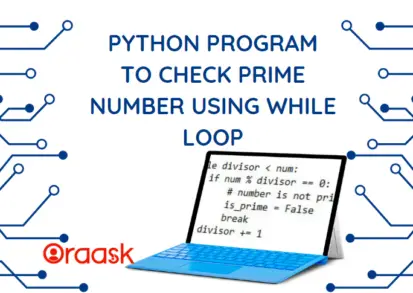
2 years ago
4 mins read
Python Program to Check Prime Number using While Loop
Python Program to Check Prime Number using While Loop
Prime numbers are an essential concept in mathematics and computer science. They are numbers that are only divisible by 1 and themselves. In ...
Oracle ACE Pro ♠ | Oracle Senior ERP Technical Consultant

2 years ago
3 mins read
Python Delete Variable: How to Free Up Memory Space in Your Code
Python Delete Variable: How to Free Up Memory Space in Your Code
Introduction: Python is a popular programming language used in a variety of applications, from data analysis to web development. One ...
Oracle ACE Pro ♠ | Oracle Senior ERP Technical Consultant

2 years ago
7 mins read
How to Swap Characters in String in Python – 3 Techniques
How to Swap Characters in String in Python – 3 Techniques
Swapping the string is one of the most commonly used operations by programmers. The string is a data type to store the text ...
Freelancer | Coder | Reader | Student | Learner
Latest Data Visualization Wiki's

2 years ago
10 mins read
Python Pandas Date: Parsing, Arithmetic, and Resampling
Python Pandas Date: Parsing, Arithmetic, and Resampling
Pandas is one of the most popular libraries of Python. This data visualization library deals with the operations related to data. In data ...
Freelancer | Coder | Reader | Student | Learner

2 years ago
5 mins read
Exploring Python Pandas Options: Your Data Power Tool
Exploring Python Pandas Options: Your Data Power Tool
Pandas is a trendy Python library used for data analysis. One of the essential features of data analysis is the options system. This ...
Freelancer | Coder | Reader | Student | Learner

2 years ago
6 mins read
Python Pandas Join: Where Datasets Converge
Python Pandas Join: Where Datasets Converge
Introduction The topic of Python Pandas join is crucial for data manipulation and analysis. It is a process of ...
Freelancer | Coder | Reader | Student | Learner
Latest Java Wiki's

2 years ago
7 mins read
Java Variable Types: Are You Using Them Correctly?
Java Variable Types: Are You Using Them Correctly?
Introduction Programs manage data stored in memory. On the machine level, data can only be called by the numeric ...
MSc degree in Computer Engineering
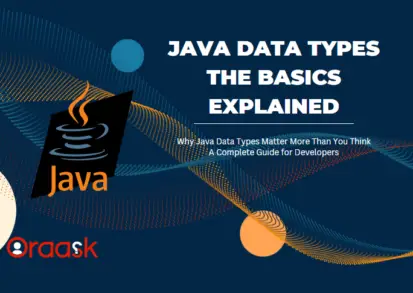
2 years ago
6 mins read
Java Data Types: The Basics Explained
Java Data Types: The Basics Explained
Introduction Each variable in Java must have a data type. There are several Java data types available. The type determines ...
MSc degree in Computer Engineering
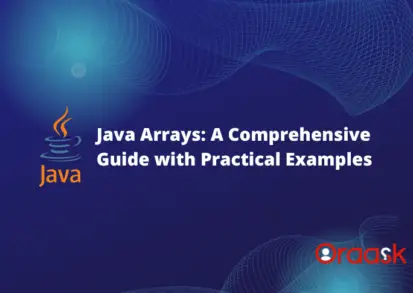
3 years ago
5 mins read
Java Arrays
Java Arrays
Introduction An array is a set of members. Each member can contain an object or primitive value. Arrays in Java ...
MSc degree in Computer Engineering
Latest Oracle Wiki's
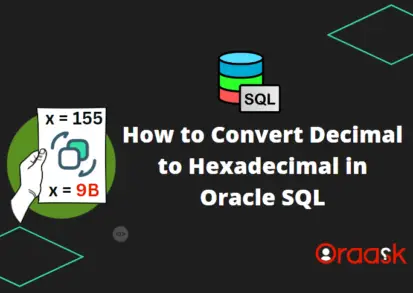
2 years ago
3 mins read
How to Convert Decimal to Hexadecimal in Oracle SQL
How to Convert Decimal to Hexadecimal in Oracle SQL
Introduction Are you struggling to convert decimal numbers to hexadecimal in Oracle SQL? Don't worry; you are not alone. ...
Oracle ACE Pro ♠ | Oracle Senior ERP Technical Consultant

2 years ago
9 mins read
How to Create Table with Foreign Key in Oracle
How to Create Table with Foreign Key in Oracle
Introduction If you are working with large amounts of data in an Oracle database, you may have come across ...
Oracle ACE Pro ♠ | Oracle Senior ERP Technical Consultant
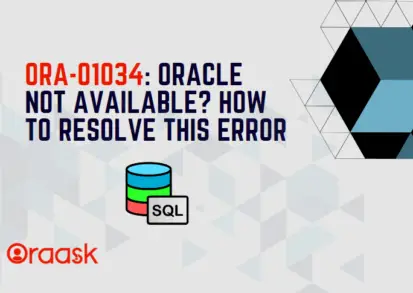
2 years ago
4 mins read
ORA-01034: Oracle Not Available – What is it, Causes, and How to Resolve
ORA-01034: Oracle Not Available – What is it, Causes, and How to Resolve
Oracle databases are widely used in the industry; sometimes, you may encounter errors when working with them. One such error is the ORA-01034 ...
Oracle ACE Pro ♠ | Oracle Senior ERP Technical Consultant
Latest JavaScript Wiki's

2 years ago
3 mins read
Easily Convert Decimal to Hex in JavaScript Today
Easily Convert Decimal to Hex in JavaScript Today
As a developer, knowing how to work with different numeral systems is essential. One such system is hexadecimal, which is commonly used in ...
Oracle ACE Pro ♠ | Oracle Senior ERP Technical Consultant
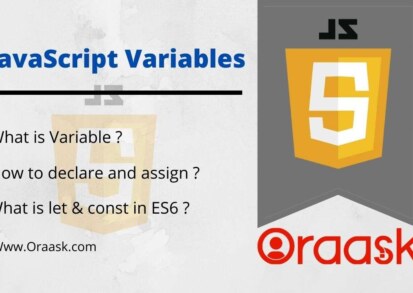
4 years ago
1 mins read
JavaScript Variables
JavaScript Variables
What are JavaScript variables? Variables are simply containers where we can store values. You can simply place the values in ...
isouravghosh
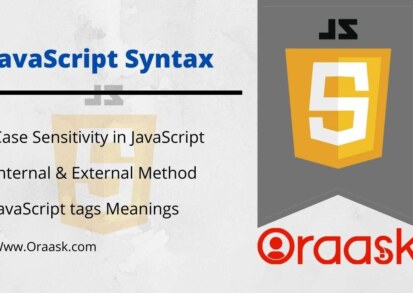
4 years ago
3 mins read
JavaScript Syntax
JavaScript Syntax
Introduction In HTML documents and webpages JavaScript can be included in two ways. One way is to include the JavaScript ...
isouravghosh
It’s possible to call an oracle API from custom schema ?
You would have to grant the appropriate permissions to your custom schema.
You would have to grant the appropriate permissions to your custom schema.
See lesshow to list all linux users and groups ?
cd /home Here you can find the user and group name. type the below command ls -lrt
cd /home
Here you can find the user and group name. type the below command
ls -lrt
See lesslinux command to delete file ?
To remove (or delete) a file or directory in Linux from the command line, use the rm (remove) command Examples:- 1.To delete a single file rm filename 2.To delete multiple files rm filename1 filename2 filename3 rm *.pdf Use the -i option to confirm each file before deleting it rm -i filename(s) UseRead more
To remove (or delete) a file or directory in Linux from the command line, use the
rm(remove) commandExamples:-
1.To delete a single file
rm filename
2.To delete multiple files
rm filename1 filename2 filename3
rm *.pdf
Use the
-ioption to confirm each file before deleting itrm -i filename(s)
Use the -f(force) optionrm -f filename(s)
3. To remove non-empty directories and all the files without being prompted use the
r(recursive) and-foptionsrm -rf dirname
See lessHow to open custom.pll in form builder?
Hello Alan, It's so simple as you open regular form .fmb in form builder just follow this: First you need to download then latest version of CUSTOM library that comes with your Oracle EBS version. (downloaded from production server). You can find the path of CUSTOM.pll under ($AU_TOP/resources) foldRead more
Hello Alan,
It’s so simple as you open regular form .fmb in form builder just follow this:
- First you need to download then latest version of CUSTOM library that comes with your Oracle EBS version. (downloaded from production server).
- You can find the path of CUSTOM.pll under ($AU_TOP/resources) folder
- Open Oracle Form Builder
- Click File menu ==> Open ==> choose CUSTOM.pll from your local machine
- After opening CUSTOM.pll into your form builder you can modify (CUSTOM) Package as per your requirements.
See lessUsing between on sysdate instead of TRUNC
Use TO_DATE Function. SELECT sum(column3) from table1 where column1 = ‘XXXXXAA12’ and column2 between to_date (<yor val>,<your format>) and to_date (<yor val>,<your format>);
Use TO_DATE Function.
SELECT sum(column3)
See lessfrom table1
where column1 = ‘XXXXXAA12’
and column2 between to_date (<yor val>,<your format>) and to_date (<yor val>,<your format>);
How to order by number inside of character for a query like ’25 AB’ ,’30 MT’ ?
Use REGEXP_SUBSTR Syntax : REGEXP_SUBSTR( string, pattern [, start_position [, nth_appearance [, match_parameter [, sub_expression ] ] ] ] ) code : SELECT t.*, REGEXP_SUBSTR (COL1, '(d+)') as sort_by_col FROM test_table t Order by sort_by_col ; Result : application2 25 AB 30 AB 3125 50 50000 AS740TRead more
Use REGEXP_SUBSTR
See lessHow to convert text with comma separated to array in pl/sql ?
Use REGEXP_SUBSTR to Extract desired info REGEXP_SUBSTR( string, pattern [, start_position [, nth_appearance [, match_parameter [, sub_expression ] ] ] ] ) And CONNECT BY to loop over the string searching for the "," and use it as a delimiter. SELECT REGEXP_SUBSTR ('text1, text2, text3', '[^,]+',Read more
Use REGEXP_SUBSTR to Extract desired info
REGEXP_SUBSTR( string, pattern [, start_position [, nth_appearance [, match_parameter [, sub_expression ] ] ] ] )
And CONNECT BY to loop over the string searching for the “,” and use it as a delimiter.
SELECT REGEXP_SUBSTR (‘text1, text2, text3’,
See less‘[^,]+’,
1,
LEVEL),LEVEL
FROM DUAL
CONNECT BY REGEXP_SUBSTR (‘text1, text2, text3’,
‘[^,]+’,
1,
LEVEL)
IS NOT NULL;
How to open gl period in oracle apps ?
General Ledger -> Setup -> Open/Close -> Find -> Open Period
General Ledger -> Setup -> Open/Close -> Find -> Open Period
See lessWhich symbol is used for concatenation? in plsql
its very simple you can use || symbol to concatenate two string or using concat function and here you can find full explanation with examples about how to use oracle || - oracle concatenation in knowledge base section. have a nice day.
its very simple you can use || symbol to concatenate two string or using concat function and here you can find full explanation with examples about how to use oracle || – oracle concatenation in knowledge base section.
have a nice day.
See lessDocument of Record
Document of Record (DOR) Overview Oracle introduced documents of record in R12 HRMS RUP 1. The Documents of Record offers greater functionality than the attachments functionality, The standard attachment functionality does not allow users to search document which is major highlight of DOR. DocumentsRead more
Document of Record (DOR)
Overview
Oracle introduced documents of record in R12 HRMS RUP 1. The Documents of Record offers greater functionality than the attachments functionality, The standard attachment functionality does not allow users to search document which is major highlight of DOR. Documents of Record (Oracle EBS R12) allows the user to create new, update existing, view and search ‘Documents of Record’ for a person. The prominent features of this functionality are as below
DOR Create Page
Now Click ‘Create Document of Record’ Button,
Functional Setup
Enable ‘Register the Program’
Navigation: System Administrator>>Security>>Responsibility>>Request Add ‘Register Extra Information Type (EITs)’ in Request Group
Create Category
Query DOCUMENT_CATEGORY (F11, CtrlF11)
Add a Code: HR_INFO
Add Meaning: HR Information
Save
Create Sub Category
Navigation: Other Definitions > User Types and Statuses
Query DOCUMENT_CATEGORY (F11, CtrlF11)
In the “System Type” field, Query the new CATEGORY using the LOV
Enter SUBCATEGORY by populating “Description” and “Code” fields
System Type: Passport Information
Description: Enter desired Subcategory
Create Sub Category
Register Document Types (EITs)
Navigation: UAE HRMS Manager>> Processes and Reports > Submit Processes and Reports > Register Document Types (EITs)
Enter the parameters as below,
Submit the request.
Add Information Type Security
Navigation: Security > Information Types Security
Search for responsibility and add Information type, Document Type will be your information type, Using EIT security model any Document type can be restricted to any particular responsibility.
Enable AME in DOR Function
System Administrator>>Application>>Function>>Form
Form Function
Create a function as ‘XX_HR_DOR_SS’ set function parameter on Form tab, Please note Parameter used will enable AME in DOR page which will allow you to setup complex approval on the other hand it will disable Supervisor Verification feature,
Add DOR in Employee Self Service Menu
System Administrator>>Application>>Function
Search for Employee Self Service Menu , Add ‘XX_HR_DOR_SS’, Clear the cache or preferably bounce Apache and check DOR functionality from respective User login.
Source : here
See less